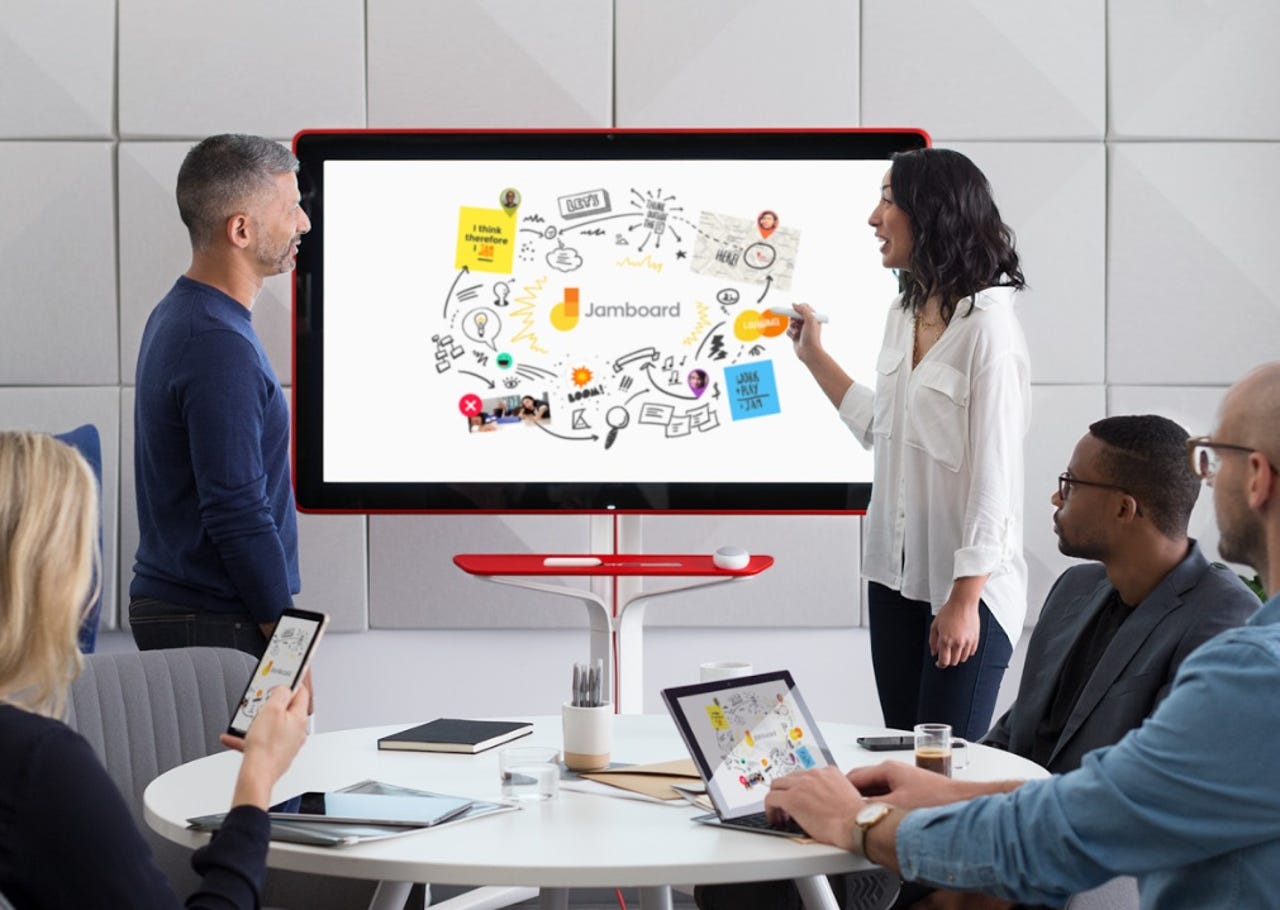Google plans to sell its own Microsoft Surface Hub alternative for under $6,000 next year

A day before Microsoft is expected to unveil a new member of its Surface device family, Google is taking the wraps off its planned alternative to the Surface Hub: Jamboard.

Google is pushing Jamboard, which is the name for both its coming appliance and the software powering the collaborative meeting experience at its heart, as "moving the whiteboard to the cloud."
Google is opening up applications for Early Adopter versions of Jamboard today, October 25. Selected applicants will begin receiving their Jamboards as soon as next week, officials said. Google's estimated ship target for Jamboard is the first half of 2017.
Google plans to make Jamboard part of its G Suite, so that users will be able to integrate Docs, Sheets, Slides, and photos stored in Drive, directly into Jamboard. As of now, there are no plans to have these apps run natively on the Jamboard itself, officials said. Instead, they'll use companion smartphone and tablet Jamboard applications (for iOS, Android, and Chrome OS) to participate in Jamboard "jams," which are backed up to Google Drive. Jamboard uses Google Hangouts and Google Cast for setting up collaborations and broadcasts.
The Jamboard hardware consists of a 55-inch, 4K, 60Hz Ultra HD Touch display, which will run a variant of Android Marshmallow. (Google is not yet disclosing which processor is inside.) The device will support passive stylus and finger recognition; 16 touch points; USB 2.0, 3.0, Type C, HDMI 2.0, Bluetooth, and NFC; and comes with a built-in wide-angle HD camera, mic, speakers, and Wi-Fi.
Microsoft has been championing touch collaboration team meeting hardware, software, and services since it bought large-display vendor Perceptive Pixel in 2012.
Microsoft first unveiled its Surface Hub conferencing systems in 2015 and began shipping them in March this year. The 55-inch Surface Hub model starts at $9,000. (Microsoft originally announced the 55-inch model would cost $7,000, but ended up revising pricing.) Earlier this month, Microsoft officials said they've shipped Surface Hubs to 600 customers worldwide. Word is Microsoft can't make enough Surface Hubs to meet demand.
Surface Hub, which runs a custom version of Windows 10, comes with custom-designed versions of OneNote, Skype for Business, and Microsoft's Office apps (for which subscriptions are required) and is able to download additional custom apps from the Windows Store for Business. Both the 55- and 84-inch models, which feature Intel Core i5 and i7 processors, respectively, support 100 multi-touch points, two wide-angle cameras, mics, speakers, Wi-Fi, USB 2.0, 3.0 and Ethernet 1000 Base T, and come with two pens,
Surface Hub is a standalone touch-computing device; Jamboard is a touch display. But both Microsoft and Google are targeting business customers who want to collaborate with these devices.
Maybe I shouldn't be surprised -- but I am, given Jamboard's business focus -- that in the product's initial release there won't be a Windows Jamboard companion app, though Windows users will be able to view (but not create/edit) jams using the Chrome browser via a shareable Drive link, Google officials confirmed.
Microsoft will be making some Office/collaboration news of its own on November 2. I'm thinking it might be a good time for Microsoft to talk about the upcoming preview of its Slack competitor, originally known as Skype Teams, and seemingly now called "Microsoft Teams."